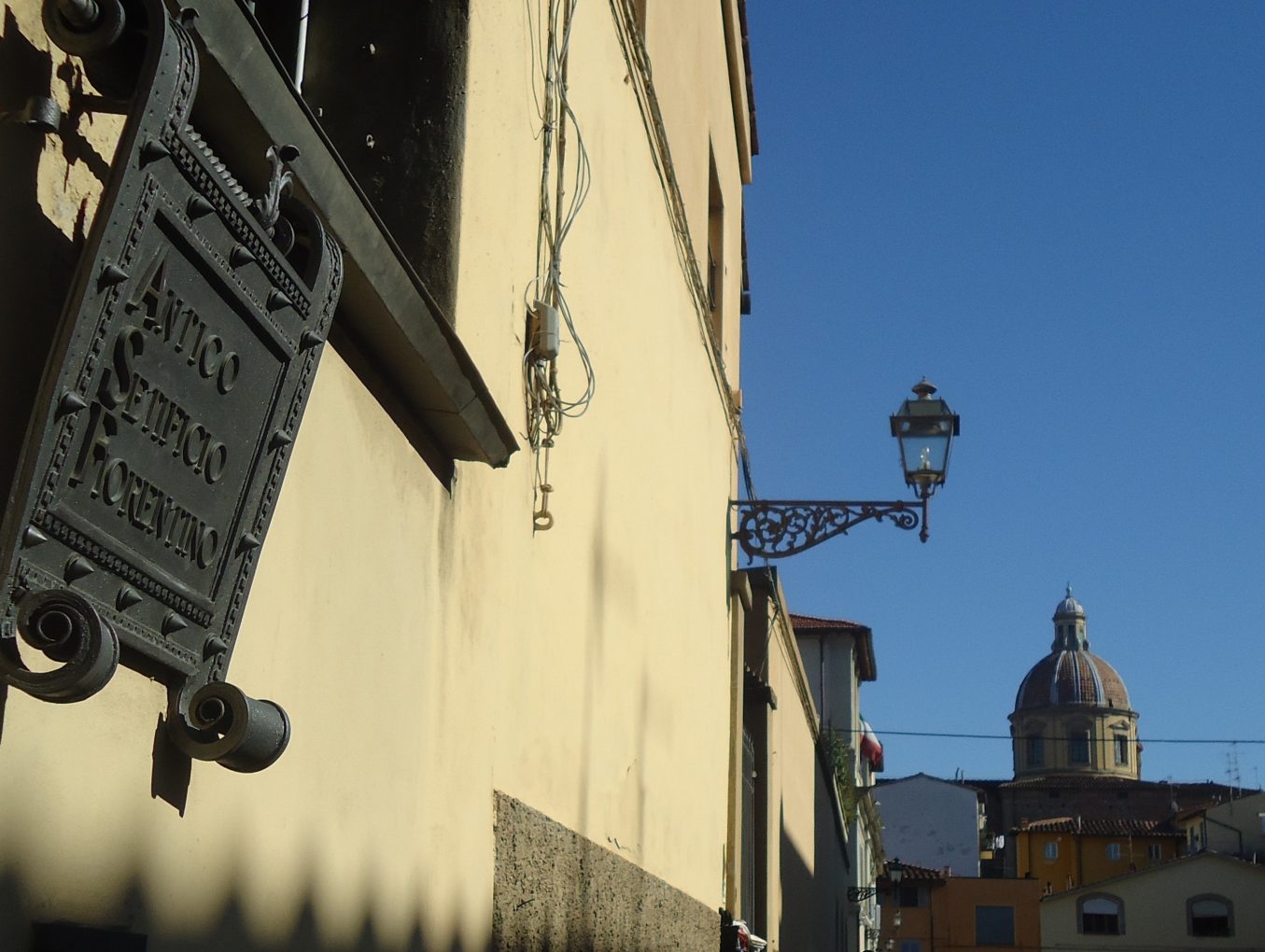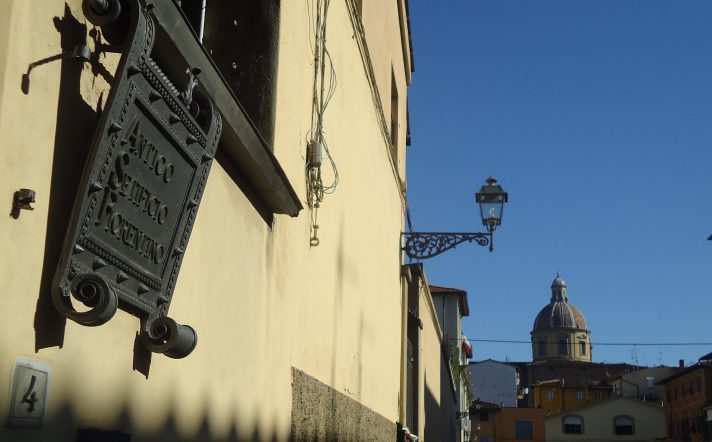
Antico Setificio Fiorentino in the ancient San Frediano neighbourhood.
The Fabric of Time: Antico Setificio Fiorentino, Florence’s oldest fabric mill
Tucked in the middle of a Florentine back-street, away from the hustle and bustle of tourists and around a 15 minute stroll from the Ponte Vecchio, lies Antico Setificio Fiorentino, the last mill where silk weaves are still produced in the same way as they were during the Silk Road.
To my delight I discovered a workshop straight out of the 18th Century, with 12 pre-industrial looms, 6 hand looms dating from 1786 and 6 semi-mechanical looms dating from the nineteenth century. In the middle of the eighteenth century, several Florentine noble families made the decision to link their fine fabric designs, detailed patterns, weaving looms, warping machines, and energies into a single silk fabric workshop, today’s Antico Setificio Fiorentino.

12 pre-industrial looms, 6 from 1786 and 6 semi-mechanical from the 19th Century.
The silk yarn, naturally hand-dyed outside Florence (often to customer-specific requirements) is still sorted and then loaded onto bobbins for the warp and weft of the loom on the premises.
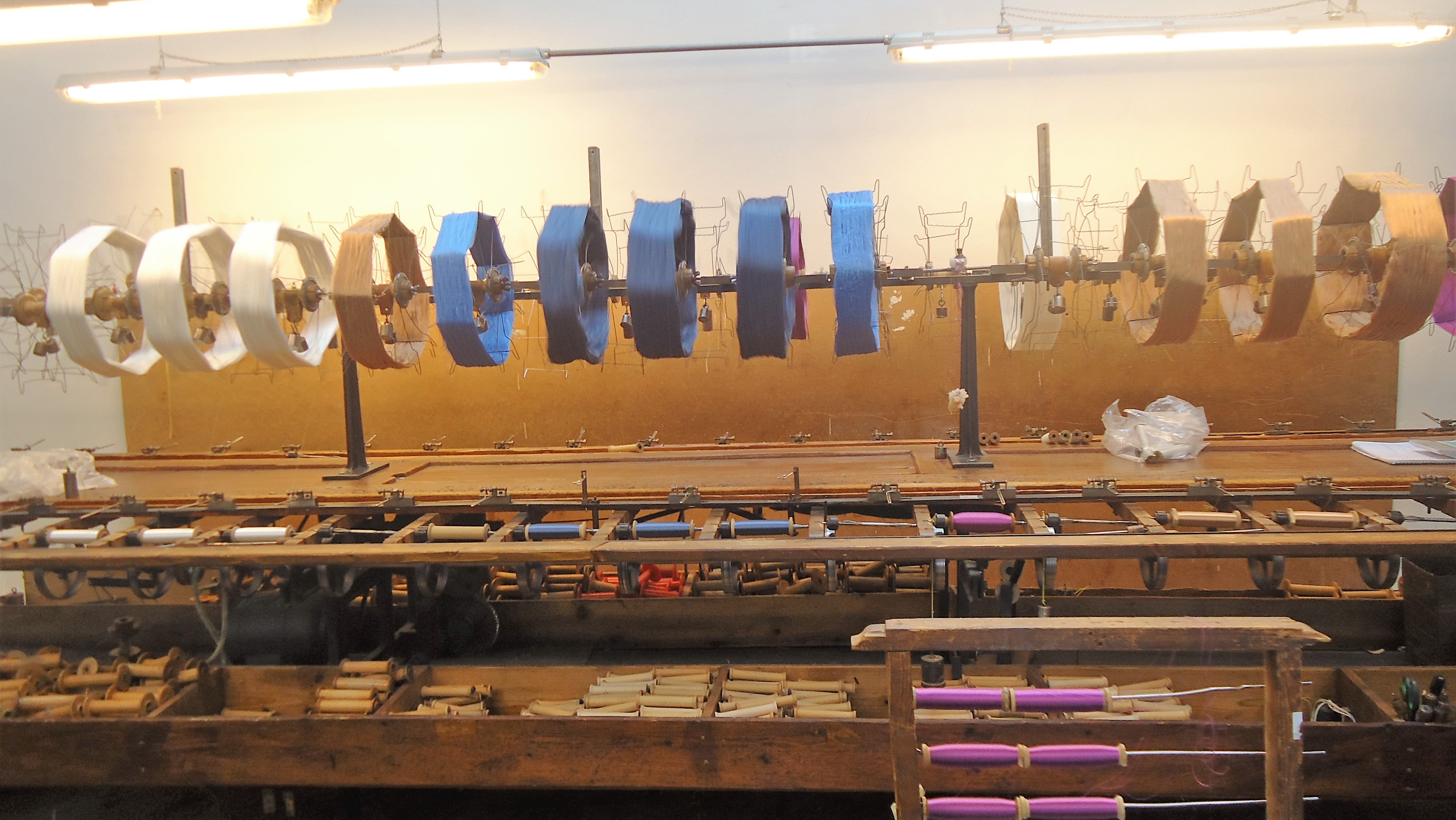
Pre-sorting of the silk for the warp and weft of the looms.
The machine which then prepares the “warp” (the threads on a loom over and under which other threads (the weft) are passed to make cloth) ready to be transferred onto the looms was in fact designed by Leonardo da Vinci.

Designed by Leonardo Da Vinci himself!
Intricate designs are made possible using punch card technology which was later copied to programme computers; IBM used it for its first arithmetic machines. Each noble family had their own pattern, assigned at birth and made possible by the encoding on the punch cards. Supporting all this is an onsite “loom technician”, the equivalent of the modern day “VIP IT support” in the office!
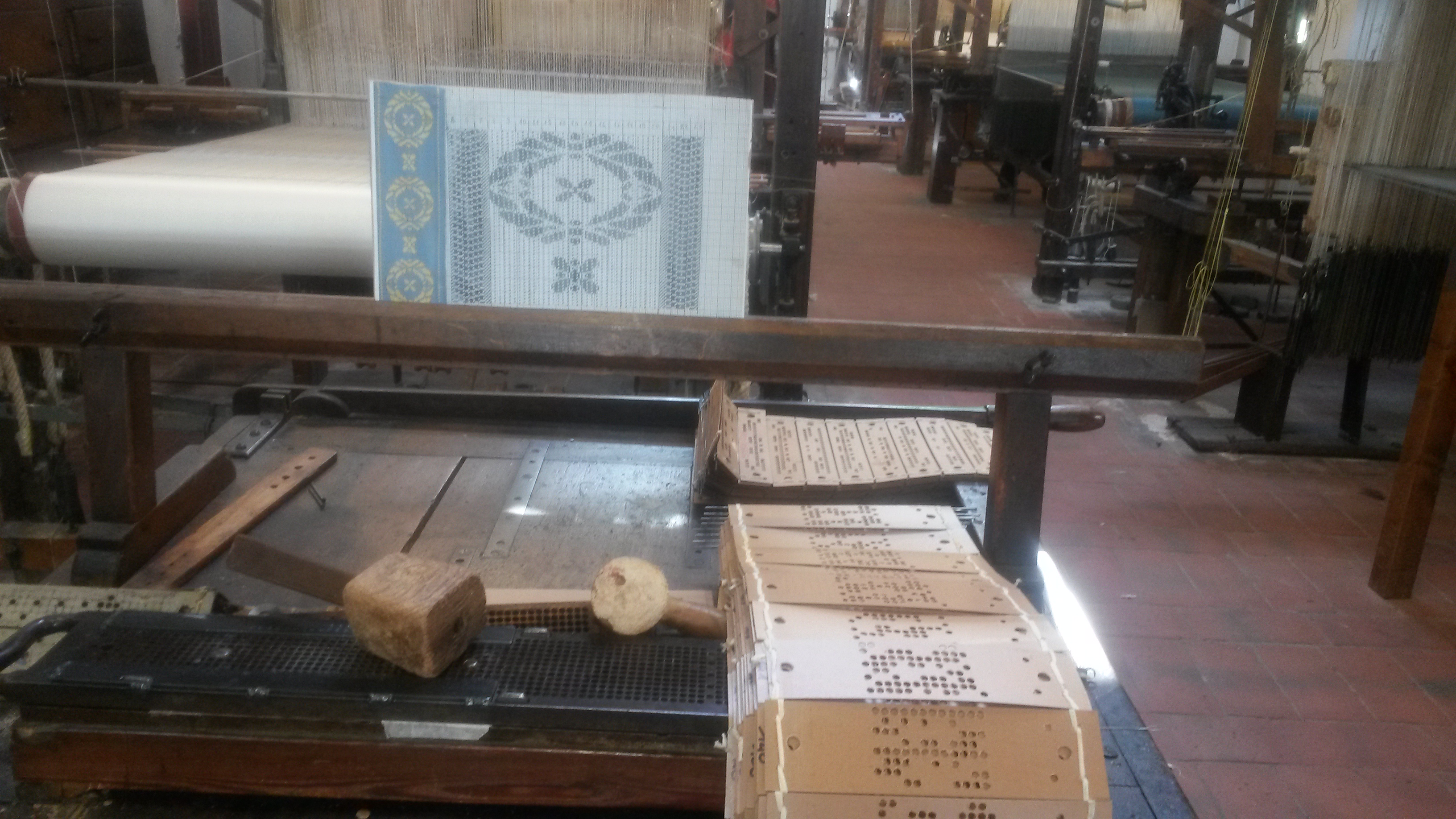
The punch cards control the movement of the heddles and hence the manufacture of the design.
One of the smallest looms is devoted to the creation of intricate fringes and braids.
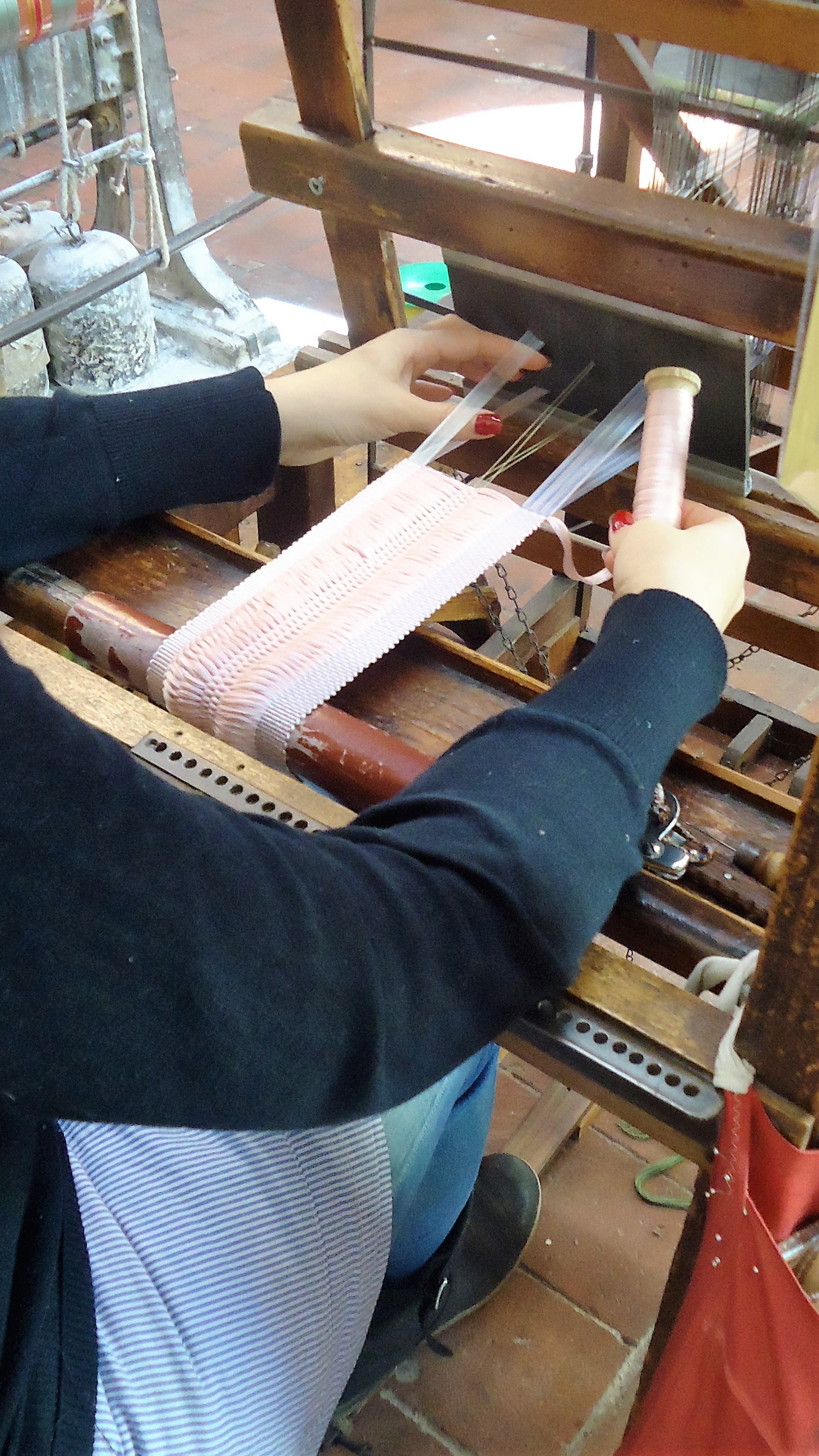
Loom producing trimmings.
The result is some of the most densely woven and beautiful fabrics I have seen.. the Broccatelli (with its 3 dimensional feel), the Lampasso, the Turkish satin, the pure silk grosgrain…
Whilst staying true to the traditional designs and methods, the addition of vibrant colours brings a contemporary feel to some of the weaves as tastes evolve.
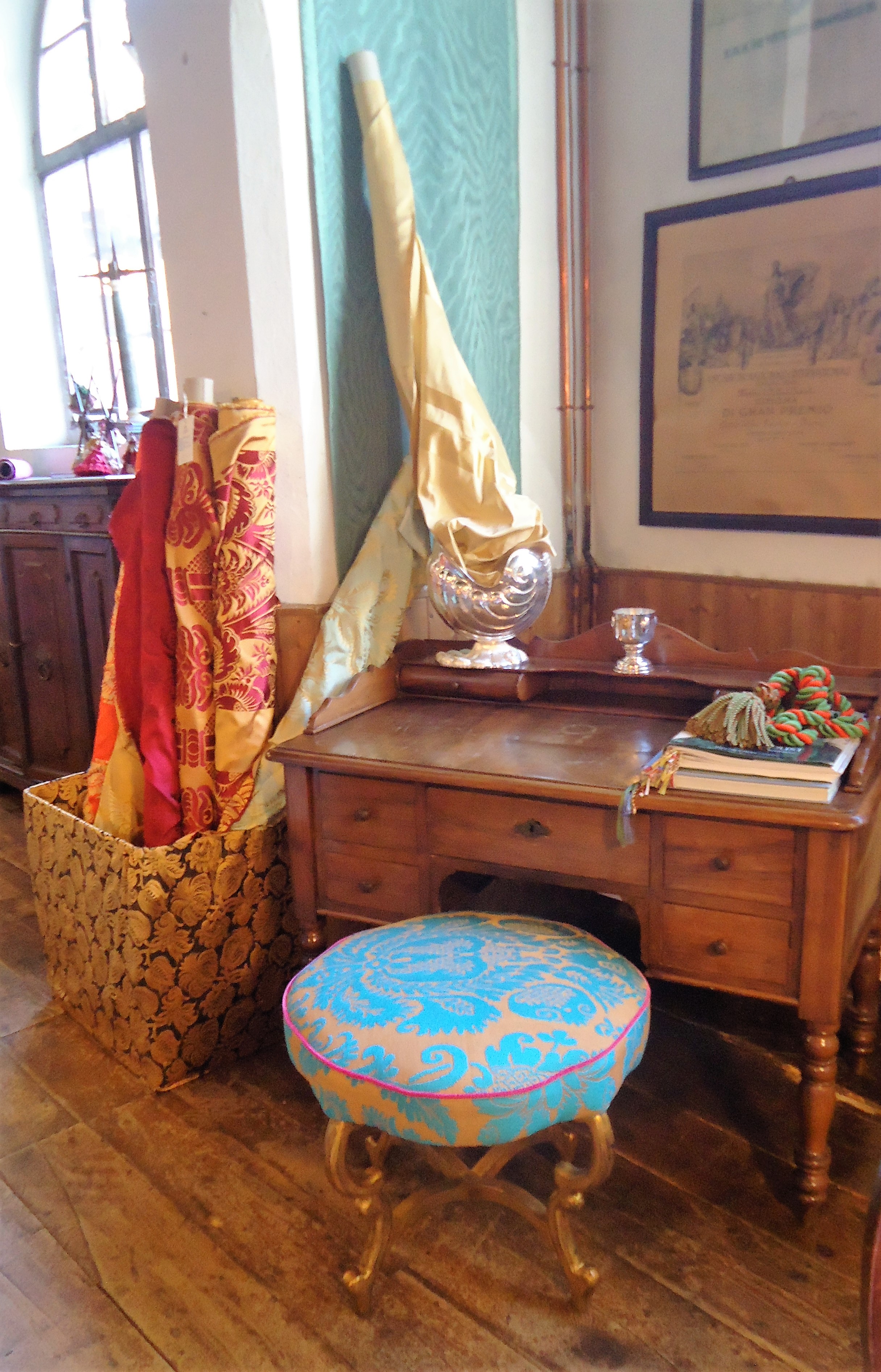
Vibrant colours bring a more contemporary feel to traditional designs.
The factory was recently purchased by Stefano Ricci and is working on the launch of an online digital catalogue for designers, hopefully we’ll still have an excuse to visit personally. Thank you to Antico Setificio Fiorentino for their hospitality and taking the time to show me around this amazing mill.
